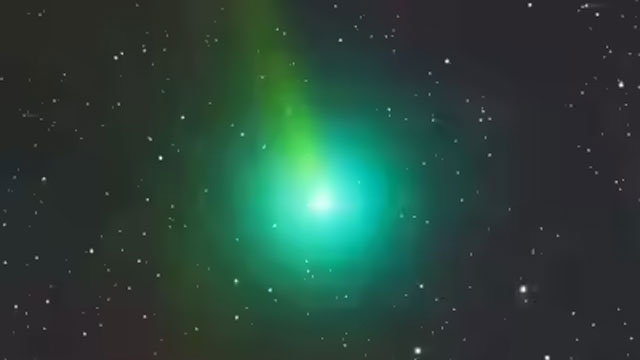Daijiworld Media Network - Muscat
Muscat, Nov 6: Skywatchers across Oman have been treated to a celestial spectacle with the rare appearance of Comet C/2025 R2 SWAN — a visitor that graces Earth’s skies only once every 20,000 years. The Oman Society of Astronomy and Space (OSAS) successfully tracked and photographed the comet, marking one of the most extraordinary astronomical events of late 2025.
Ibrahim bin Mohammed Al Mahrouqi, Vice Chairman of OSAS, said the observation reflects the society’s continuous commitment to studying and documenting significant space phenomena visible from the Sultanate.

“Comet SWAN is an irregular, non-periodic comet originating from the distant outskirts of our solar system. Its long orbital path means this is likely the only time in our lifetime — and for many millennia — that it will be visible from Earth,” Al Mahrouqi explained.
The comet was first discovered on September 11, 2025, by Ukrainian amateur astronomer Vladimir Bezugly through images taken by the SWAN (Solar Wind Anisotropies) instrument aboard NASA’s SOHO space observatory. Czech astronomer Martin Macek later confirmed the discovery using the FRAM telescope in Chile.
Comet SWAN made its closest approach to the Sun on September 12, 2025, at a distance of 0.5 astronomical units, and passed nearest to Earth on October 20, at just 39 million kilometres away. In early November, the comet is visible in the constellation Aquarius as it gradually moves away from the planet.
During its peak in October, the comet’s brightness reached magnitude 6 to 7, making it visible under dark skies. However, its luminosity has since dimmed to magnitude 8.2 to 10.75, requiring binoculars or a small telescope for clear observation.
OSAS member Al Jalandi bin Masaud Al Rawahi also captured detailed images of the comet from a dark-sky site in Muscat Governorate, contributing to the society’s efforts to document this rare occurrence.
Al Mahrouqi noted that beyond its visual beauty, Comet SWAN’s arrival serves as a profound reminder of the immense time scales and cosmic rhythms of the universe. “Some phenomena return only once in tens of thousands of years,” he said, calling it an awe-inspiring moment for Oman’s astronomy community and sky enthusiasts alike.